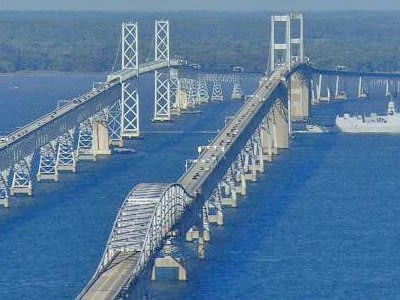
In addition to threats to the habitat and bay health, it is important to add the impact on air quality with the projected 22% increase in traffic.


One of the reasons for objecting to the expansion was an important component to the conversation: Expansion will inevitably put at risk important natural habitat on the Eastern Shore and the bay waterways.Įxpansion will also increase risks to the habitat on the Western Shore, especially in Annapolis and surrounding communities.

A link to the upcoming “virtual listening meeting” on June 27 provided a helpful way for the reader to express their viewpoints and are worth repeating: Great work! Is the Red Line going to spur development and connect many people with job centers? What does the ridership project to be? Will its revenues even make a dent in the operating costs? A good starting point for such an analysis would be the history and present state of the current light rail system and the subway.Ĭonsider air quality when exploring Bay Bridge expansionĪ recent editorial raised a number of challenges to the state proposal to expand the Bay Bridge. We cannot build a modern city without mass transportation, but we need to lead with our heads and not our hearts. They cite “equity” as something that should weigh heavily in the scales. I will not concede that it is an either/or proposition. Since we don’t have unlimited funds for transportation, we need to make a choice between the replacing the bridge or building the Red Line. The editors then get down to the real reason behind the editorial. The editors cynically seem to think that 3-mile backups at the bridge are a minor inconvenience and only affect “Ocean City business owners.” Those “annoying” backups occur year-round, are frequently much worse than three miles, affect many thousands of travelers and result in huge losses of productivity. Downward Green Arrow: You are clear to drive in this lane.The argument that we should be preserving the rural character of the Eastern Shore and discouraging shoreline development in light of the increasing peril of rising sea level is absolutely correct, but those goals should be approached through zoning and land-use planning, not by all allowing the bridge to deteriorate without any plan for replacement.Yellow X– Get ready to leave the lane below the yellow X and move to a lane with a downward green arrow.You must not enter or travel in any lane where a Red X signal is shown The bridge uses overhead lane-use control signals, full-color message signs, illuminated pavement markers and more to alert and guide motorists when lanes are either open or closed for use What is the Bay Bridge Automated Lane Closure System? The core issue is traffic volume exceeding lane capacity, not two way operation timing not management.”
#Chesapeake bay bridge traffic statistics drivers
MDTA has announced that “weather and traffic permitting, two-way operations will be implemented to help prevent eastbound delays from becoming gridlock at the Bay Bridge.”Īdding that, drivers who travel during peak hours “should expect significant delays when crossing the bridge. So, when’s the best time to travel across the Bay Bridge this Labor Day weekend? In doing so,roadways will remain away open for first responders and residents. MDTA urges motorists to stay on US 50 on both sides of the bridge. MDTA predicts traffic will gather at the bridge and along the US 50 corridor. 4.Īccording to MDTA, delays will occur in both directions, possibly simultaneously. MDTA expects over 350,000 vehicles to cross the bridge between Sept. The Maryland Transportation Authority (MDTA) urges individuals to plan ahead and pack their patience for possible delays. Labor Day is less than a week away and if we know anything about the Bay Bridge, there will be traffic.


 0 kommentar(er)
0 kommentar(er)
